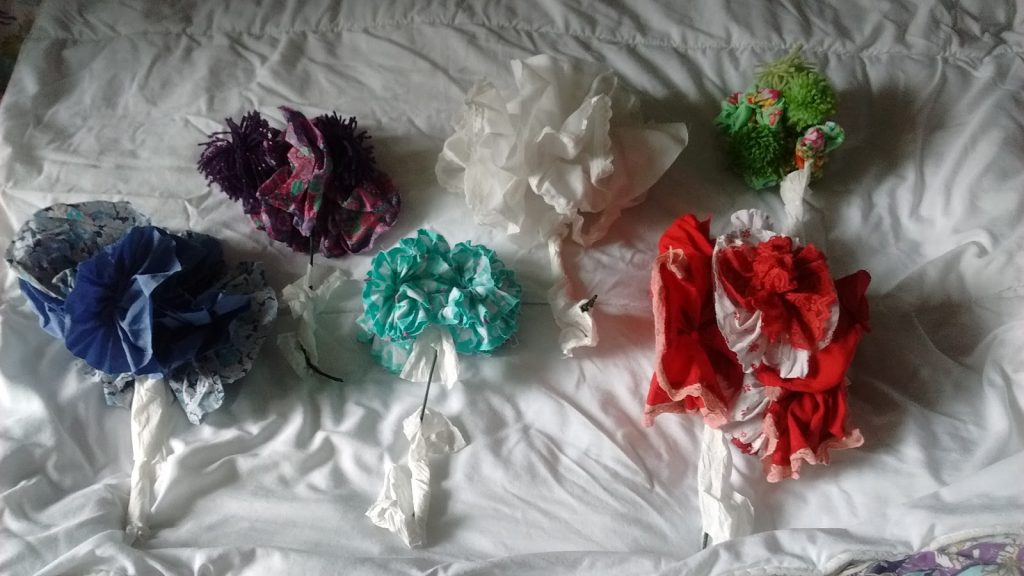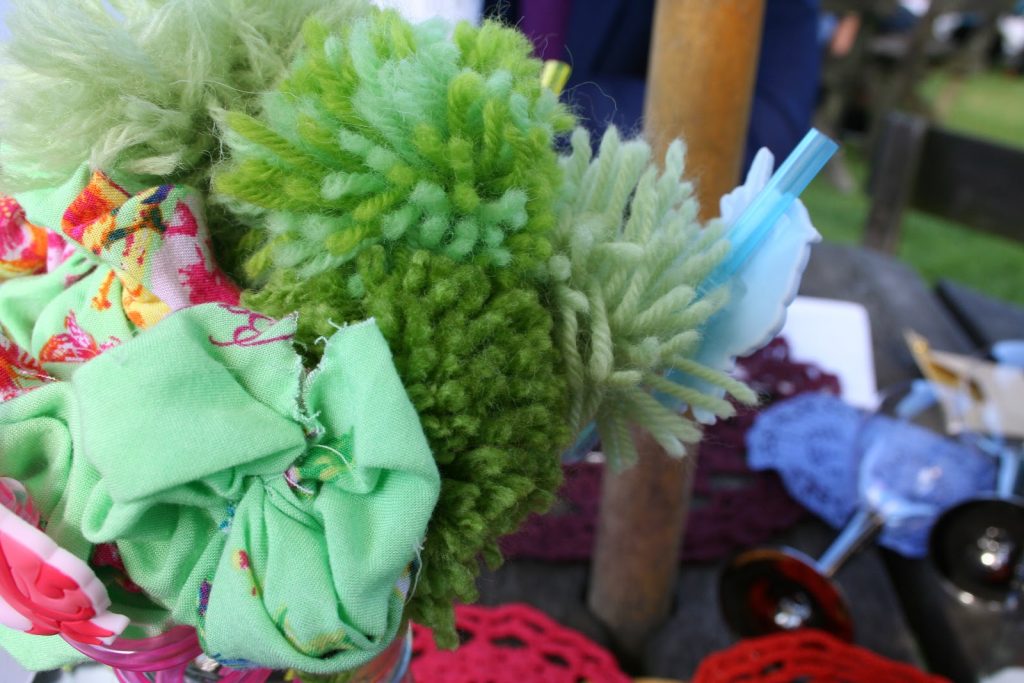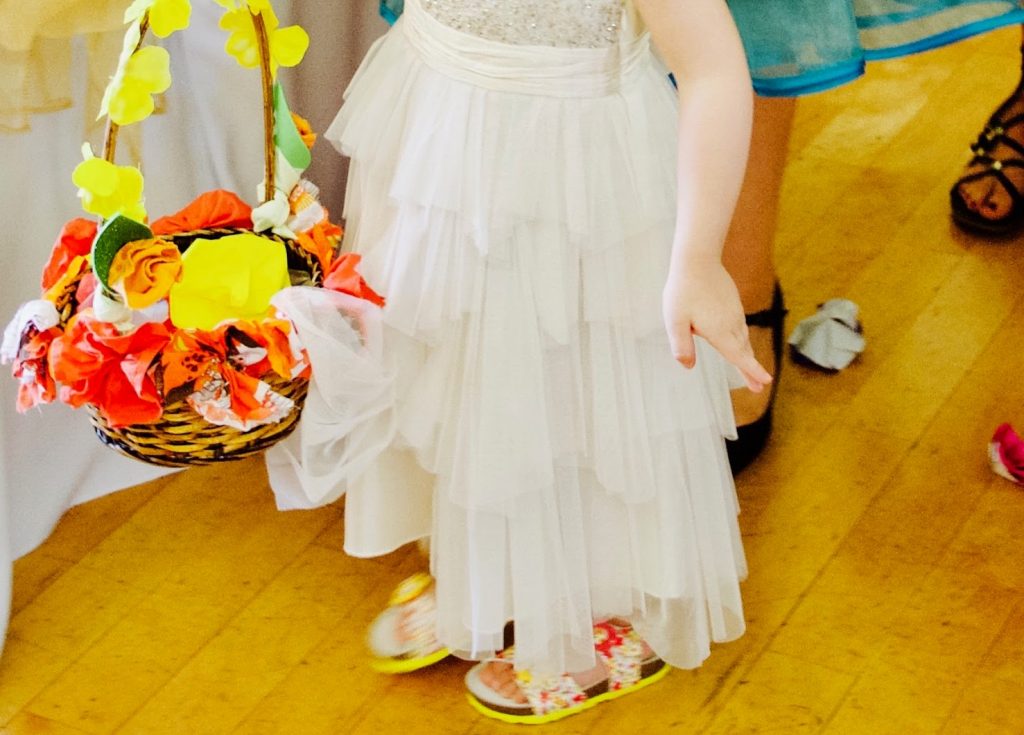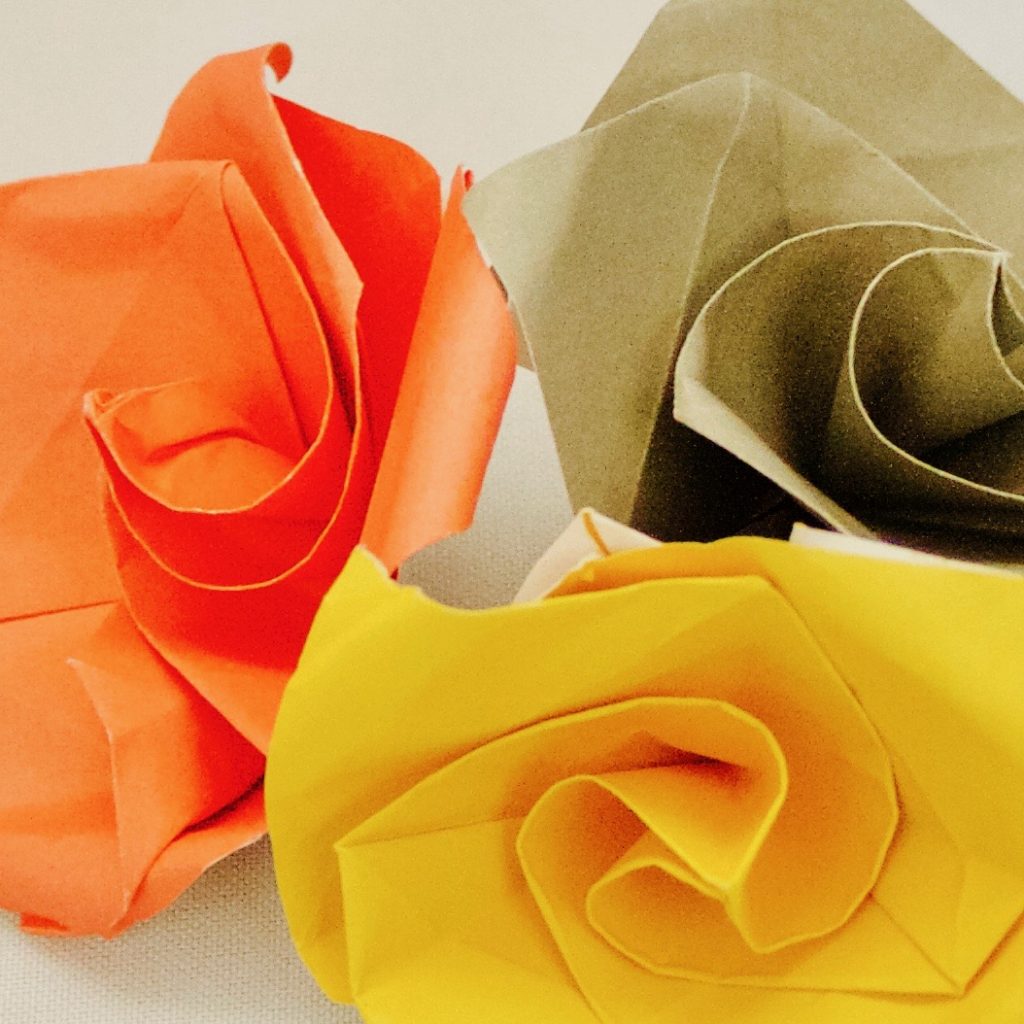(Un)Crafty Bride on a Budget: Handmade Fabric Bouquets, Origami Flowers, and Flower Baskets
Making our wedding flowers was a long and rewarding part of preparing for a highly personal, low-cost and (relatively) environmentally-friendly wedding. I’m posting about this first, as if you’re planning to make your own flowers, it’s good to start early, so you can pick up and put down this project as time, leading up to your wedding, goes by. I had never made flowers before, and with some help from friends and strangers, was able to make my own bouquet, and my seven (!) bridesmaids’.
Here is my bouquet — made from the petticoat of my daughters’ outgrown, 2-year-old-size summer dress.
Why would I have needed to make flowers?
Wedding flowers cost hundreds of pounds, cheap cut flowers are often not friendly to the environment. What’s an uncrafty bride on a budget to do?
Make flowers.
What sort of flowers? You may well have a theme or colours for your wedding. For years, I held onto a dream of having a rainbow of bridesmaids; however, after looking at a few Pinterest images, I decided it didn’t work visually. I had seen that when a group of bridesmaids stood in a line wearing dresses in every colour of the rainbow, they looked like a rainbow, but I imagined that as soon as they reconfigured or mingled or moved – which I very much wanted my bridesmaids to do – they’d look like guests, in block colours.
The rainbow was still an important motif for a number of reasons, but another one had become important: my bridesmaids as backing singers. These were the women who had been there at all the important times, who brought the glamour of true friendship and love. They have always been with me, backing me. I love backing singers.
I also wanted my loved ones to be comfortable. So, I asked my bridesmaids to wear their little black dresses (or catsuits / trouser suits / skirts and tops), like backing singers, and to each choose a colour to accessorise with. Then I made bouquets in their rainbow colours.
Photo by the brilliant Tracy Morter (www.tracymorter.com ). Three brilliant women. Three out of seven rainbow flowers…
As established in my ‘Why So Many Clothes?’ diary (https://saranesbitt.co.uk/2011/06/12/why-why-so-many-clothes/), during which I wore everything in my enormous wardrobe, I have a tendency towards holding onto clothes. This meant that when it came to finding meaningful materials to make my flowers, I had plenty.
I used fabric from our daughters’ outgrown summer dresses. Around the necks, there were the usual toddler stains etc., which meant they were not good hand-me-downs. However, much of the fabric was gorgeous and colourful and, importantly, connected to our union. If you’re making your own bouquets from old clothes, first date clothes might be another interesting fabric, or anything that is unwearable but has some kind of history.
A friend added me to the Facebook group, A Make Do and Mend Life, early on in wedding preparations. This helped a lot: a community of people who are generous with their skills and advice and gently passionate about conservation. I was advised to get myself a glue gun and given some ideas on how to make the fabric into flowers.
The method I went with in the end was a combination of several, and well suited to my rudimentary craft skills.
- Cut a strip of fabric, about 2-3 inches wide (4-5 cm), and longer than 12 inches (30cm).
- Thread a needle with a length of cotton, doubling it up and tying several knots in the end so that the knot hooks onto the fabric when you make the first stitch (much like you will have learned at Primary School).
- Tack along one long edge of the fabric strip (to tack means to do a very basic stitch, in and out. I know this from a friend who customises all her clothes. She is amazing).

- When you get to the end, pull. The fabric will gather along the edge with the stitches in. Pinch this fabric between your fingers as it gathers, so it forms the base of a bloom.
- Poke a piece of florist wire inside the gathered fabric.
- Apply hot glue to it from your hot glue gun.
- Squeeze the fabric into the hot glue to stick the wire to the flower and cover up any dodgy stitching (being careful not to touch any hot glue so you don’t burn yourself).
- When you have made enough flowers for a bunch, wrap all the flowers together with florist tape. This tape doesn’t appear sticky until you apply a mild stretch to it and then it activates – great fun.
Total Cost: approx £26
Fabric – reused (free)
Hot glue gun with glue sticks – approx £20
Florist tape – approx £3 per roll
Florist wire – appox £3 for 100 ‘stems’
Time: on and off for months. Once you get the hang of it, you can make three or four at a time while catching up with a TV show, listening to a bit of music, or even having a drink and chat.
Floppier fabrics were less useful; starchy cottons were best. I filled in smaller bouquets with woolly pom poms (more on those in another post). This is my picture of the bouquets, their stems wrapped with tissue just in case the English summer got really hot and the wax on the florist tape bled (almost wishful thinking…)
After the ceremony, the flowers went back to the venue and into glass jars on the tables.
Flower Girl Baskets
As well as the bouquets, we decorated two baskets found in a local charity shop with the fabric flowers. Two lovely friends and I spent a fun evening trial and erroring making origami flowers, finally finding a video we could follow on YouTube.
We filled the flower baskets with the origami flowers and they were scattered to make a colourful path down the aisle. It was a perfect way of bringing our wedding into the Town Hall.
Total Cost: £6
Origami paper – friends decluttering (free)
Baskets – £6 from charity shops
Time: a very enjoyable evening, plus a few extra origami flower making sessions while watching First Dates.
With huge thanks to Natalie S for additional photos.
The Origami Flowers, made from this YouTube video https://www.youtube.com/watch?v=jm_4hFPFAOU






